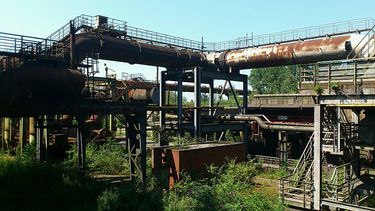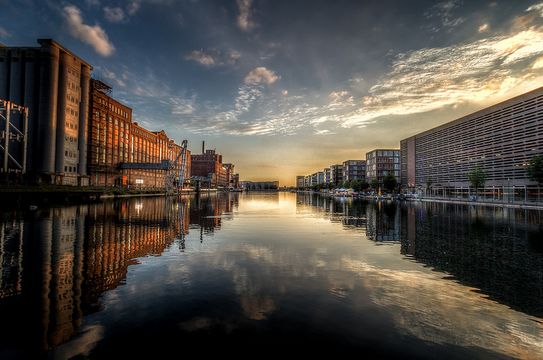#OldIndustrialAreas #Ruhrgebiet #RiversRhineAndRuhr
Duisburg
WHERE GREEN PARKS HAVE REPLACED HEAVY INDUSTRY

Situated at the confluence of the Rhine and Ruhr Rivers, Duisburg built its fortune on steel and coal. Now its residents have reclaimed their home town and enjoy green parks, spacious meadows and a bit of nostalgia. An ideal place to study and get to know German history and culture.
Facts
495,152 Inhabitants ¹
41,421 Students ²
1 Higher education institution ²
WELCOME TO DUISBURG
When you arrive in Duisburg by train and exit the main station, the first thing you see is a treeless, desolate square – and sometimes a blustery wind blows into your face. But don’t let that change your mind about staying, because Duisburg is worth it.
This is where the Rhine and Ruhr Rivers converge, and its beauty is not immediately obvious to the casual observer. Which makes it all the more interesting to discover what the city has to offer. Only a few minutes away from the main train station, you’ll find the Inner Harbour – the „place to be“ in Duisburg. The old storehouses around the harbour basin have been modernised and new buildings have been added in recent years. Alongside offices and shops, one now finds restaurants and bars and Duisburg’s residents enjoy warm summer evenings on the outdoor terraces.
We recommend taking a walk through the North Duisburg Landscape Park in the summer time: This former industrial complex with its blast furnaces, factory halls and gigantic machines has been reclaimed and transformed into a green park. On weekdays the old chimney stacks are illuminated in different colours; on the weekends the illumination is extended to further parts of the industrial complex. This creates a magical atmosphere.
Tip
Pay a visit to Weseler Strasse! In recent years, this street has become Germany’s bridal fashion centre. Here you’ll find one bridal boutique after another, along with jewelry stores and outfitters. Even if you don’t want to buy anything, it’s always fun to watch the hustle and bustle! The selection is so large that even soon-to-married couples from the Netherlands, Belgium and France come here to shop.
As you explore the city, you’ll occasionally discover places that still bear witness to the city’s industrial past. Duisburg was once an important steel and coal mining town. Home to Europe’s largest inner harbour, Duisburg exported products to every corner of the world. But after the so-called „steel crisis“ in the 1970s, the demand for Duisburg steel sank and numerous steel mills and smelting plants were forced to shut down. As a result, many people lost their jobs.
Interview
ALVARO FROM BOLIVIA
LIFE IN DUISBURG
For a long time the city struggled to rebound from the collapse of its industry, but in recent years it has reinvented itself. Many people are dedicated to promoting the city and using the newly acquired spaces for art and cultural projects.
Compared to Essen or Düsseldorf, you’ll find beautiful and large flats at an affordable price in Duisburg. And its location couldn’t be better: Situated in the centre of North Rhine-Westphalia, you can quickly reach , , and the Netherlands.
Apartments and rooms in flat shares (WGs) are inexpensive, and when you go out with friends, you won’t have to spend very much money.
Even though Duisburg used to be very industrial, you’ll find it full of nature today. In addition to the in North Duisburg, you should also visit the . Some of the lakes are open for swimming, and around others there are trails and bike paths which you can take to explore the picturesque surroundings.
#PearlOnTheRhine #InternationalAndColorful #GermanFashionCity


